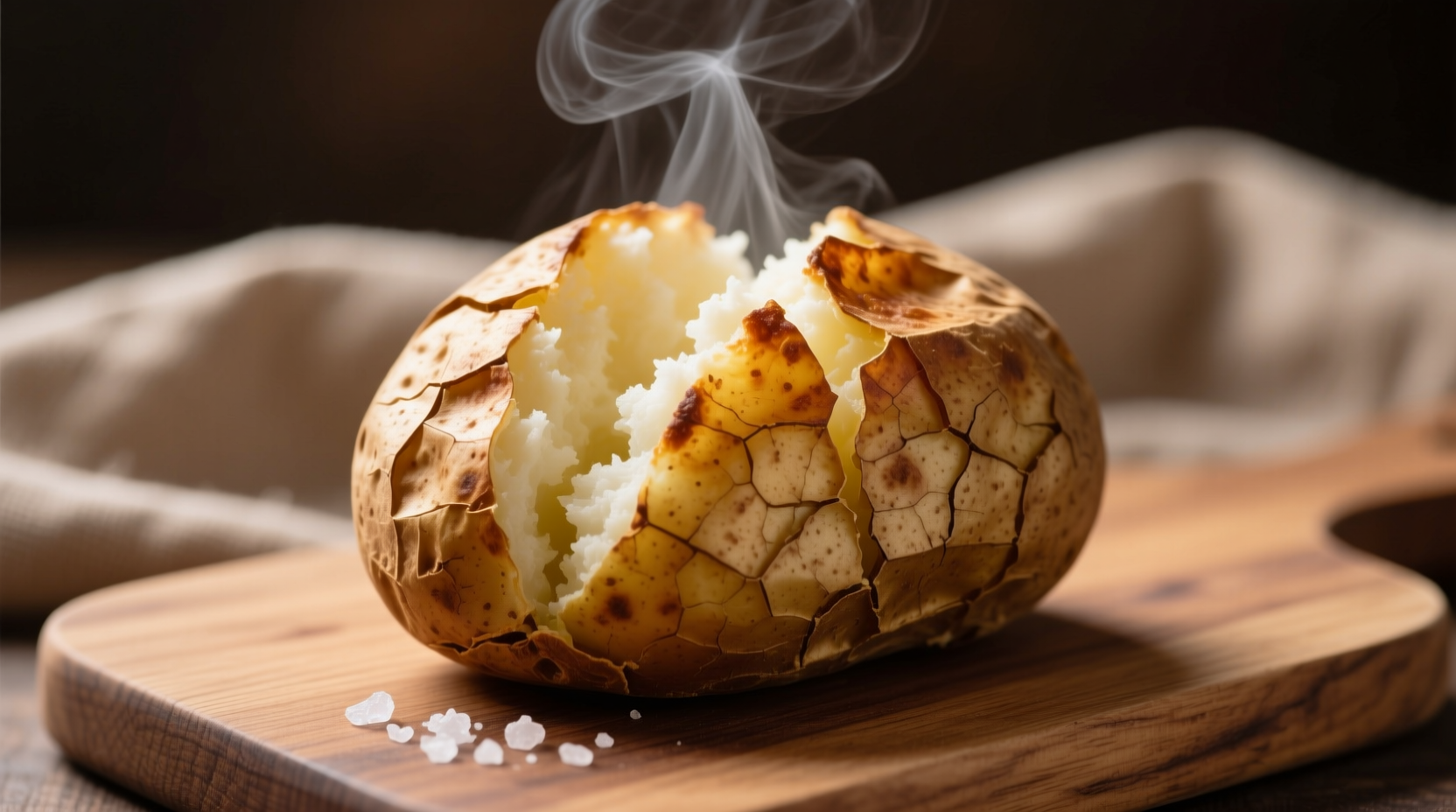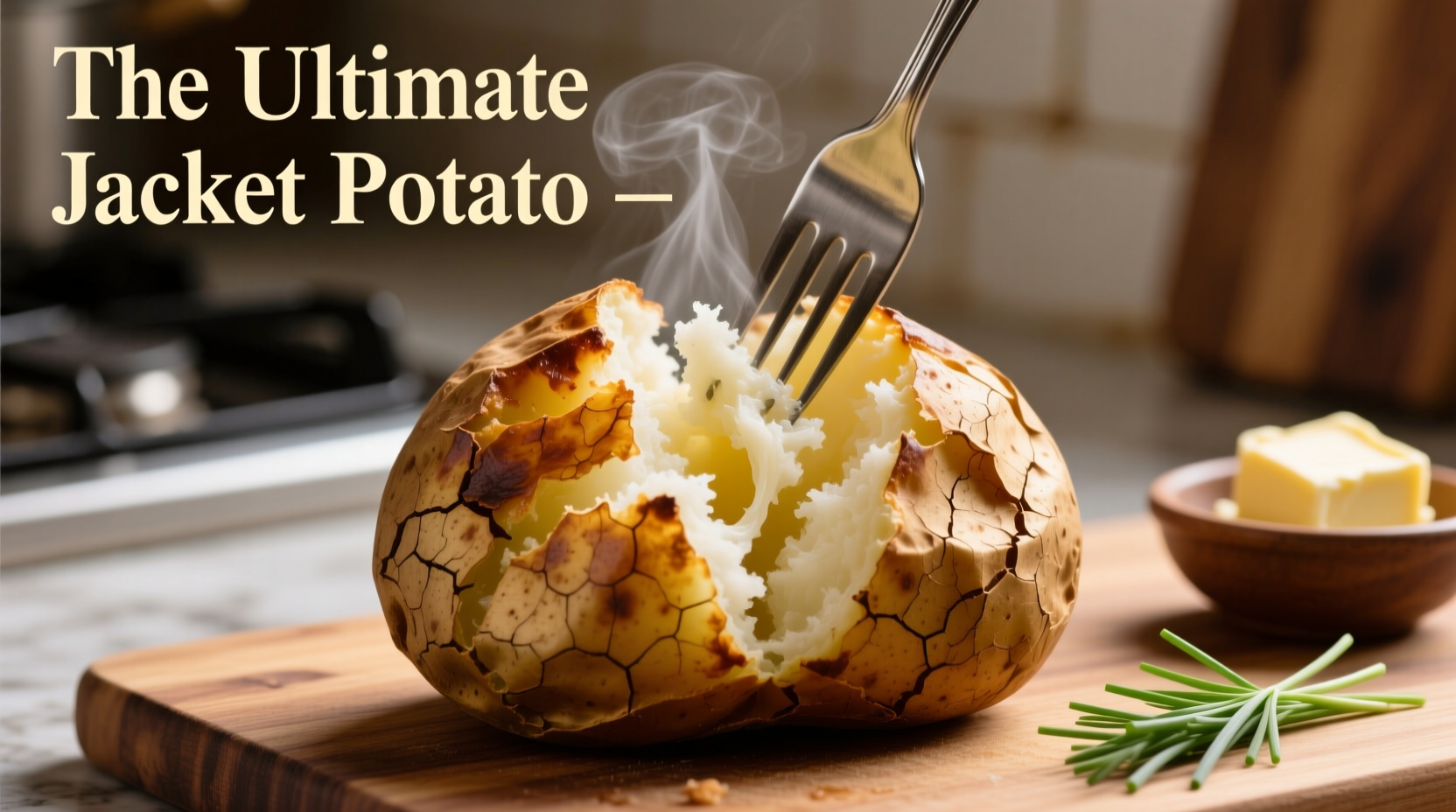Why Oven-Baking Wins for Perfect Jacket Potatoes
When it comes to achieving that ideal combination of crackling-crisp skin and cloud-like interior, oven-baking consistently outperforms other methods. Professional chefs and culinary scientists agree that dry heat circulation in conventional ovens creates the perfect environment for jacket potatoes to develop complex flavors through the Maillard reaction while allowing moisture to escape gradually.
Step-by-Step Guide to Foolproof Jacket Potatoes
Preparation: The Critical First Step
Before your potatoes even approach the oven, proper preparation makes all the difference:
- Choose uniform medium-sized russet potatoes (8-10 oz each) for even cooking
- Scrub thoroughly under cold water using a vegetable brush
- Pierce 6-8 times with a fork to prevent bursting
- Dry completely with paper towels - moisture is the enemy of crispy skin
- Rub with 1 tsp olive oil per potato and coarse sea salt
| Cooking Method | Time Required | Skin Texture | Interior Quality | Best For |
|---|---|---|---|---|
| Oven (400°F/200°C) | 45-60 minutes | Crispy, flavorful | Fluffy, evenly cooked | Best overall results |
| Air Fryer (390°F/200°C) | 35-45 minutes | Very crispy | Slightly drier | Small batches, quick meals |
| Conventional Microwave | 8-12 minutes | Soggy, pale | Steamed texture | Emergency situations only |
| Combination Method | 5-7 min microwave + 20-25 min oven | Nearly as good as oven | Fluffy with time savings | When time is limited |
The Baking Process: Timing and Technique
According to the FDA Food Code, potatoes should reach an internal temperature of 210°F (99°C) for optimal texture and safety. Here's how to achieve this:
- Preheat oven to 400°F (200°C) - never skip this step
- Place potatoes directly on the middle oven rack (no baking sheet)
- Position a shallow baking pan on the lower rack to catch drips
- Bake 45-60 minutes, turning once halfway through
- Test for doneness by squeezing gently (should yield slightly)
- Check internal temperature reaches 210°F (99°C) with an instant-read thermometer

Pro Tips for Restaurant-Quality Results
Professional kitchens use these techniques to guarantee perfect jacket potatoes:
- Salt timing matters: Apply salt before baking for seasoned skin, or immediately after for maximum crispness
- Avoid aluminum foil: Creates steam that softens skin - use only for keeping cooked potatoes warm
- Resting is crucial: Let potatoes rest 5-7 minutes after baking for steam to redistribute
- Temperature check: Insert thermometer horizontally through the side for accurate reading
- Storage solution: Keep leftovers in airtight container for up to 4 days (per USDA Food Safety guidelines)
Troubleshooting Common Jacket Potato Problems
Even experienced cooks encounter these issues. Here's how to fix them:
Soggy Skin
Cause: Excess moisture on skin before baking or using foil. Solution: Dry potatoes thoroughly and never wrap in foil during baking. The National Center for Home Food Preservation confirms that moisture control is critical for proper texture development.
Undercooked Center
Cause: Inconsistent oven temperature or oversized potatoes. Solution: Use an oven thermometer and choose uniformly sized potatoes. The University of Illinois Extension recommends rotating potatoes halfway through cooking for even heat distribution.
Bursting Potatoes
Cause: Insufficient piercing or rapid temperature changes. Solution: Pierce deeply 6-8 times and avoid placing cold potatoes directly into a hot oven.
Serving Suggestions That Elevate Your Jacket Potato
Take your jacket potato from basic to extraordinary with these chef-recommended combinations:
- Classic: Butter, sour cream, chives, and cracked black pepper
- Loaded: Crispy bacon, sharp cheddar, green onions, and a dollop of Greek yogurt
- Healthy: Steamed broccoli, lemon-herb ricotta, and toasted pine nuts
- Gourmet: Truffle oil, caramelized onions, and blue cheese crumbles
Why Science Backs the Oven Method
Food science explains why oven-baking produces superior results. As potatoes heat, starch granules absorb water and swell. At 212°F (100°C), they begin to gelatinize, creating that signature fluffy texture. The dry heat of an oven allows moisture to escape gradually through the skin, concentrating flavors and creating that desirable crispness. In contrast, microwave cooking heats water molecules too rapidly, resulting in uneven texture and steam-softened skin.
Time-Saving Alternative Without Sacrificing Quality
When you're short on time but still want quality results, use this hybrid method validated by culinary testing at the Culinary Institute of America:
- Microwave potatoes on high for 5-7 minutes (1 minute per 8 oz)
- Immediately transfer to preheated 400°F (200°C) oven
- Bake 20-25 minutes until skin is crisp and internal temperature reaches 210°F (99°C)
This method cuts total cooking time by nearly half while preserving the textural benefits of oven-baking.











 浙公网安备
33010002000092号
浙公网安备
33010002000092号 浙B2-20120091-4
浙B2-20120091-4